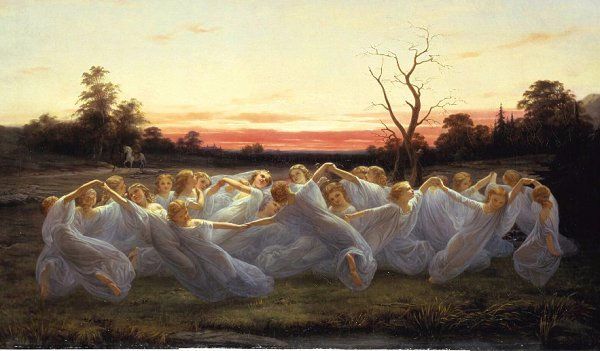Mysteries of Bona Dea: Women's Rites in Ancient Rome
- Sylvia Rose

- Dec 25, 2024
- 4 min read
Updated: Dec 26, 2024
Bona Dea, the "Good Goddess," has a special place among ancient Roman deities. Her mysteries are only for women. Goddess of fertility, chastity, healing and protection of the Roman state, she represents a blend of religious practices, gender and social structures.

Her worship gives insight into the complexities of women’s rights and societal roles in Rome, especially during the Republic (509 - 27 BCE) in its later years. She's a Great Goddess, and represents the Earth Mother archetype and qualities seen as admirable in women.
Historical Context: Women in Roman Society
The importance of Bona Dea is emphasized by the broader societal framework of ancient Rome. Roman women, particularly those of the patrician class, are primarily defined by their roles as wives and mothers.

Their responsibilities revolve around managing the household and raising children. They have little direct influence in political or public spheres. Republican Roman society restricts women to domestic roles, with limited access to property ownership or legal assistance.
From c. 200 BCE on, women begin to assert their presence in public and religious life more boldly. The lex Julia and lex Papia Poppaea laws of the first century BCE grant women greater independence regarding property and inheritance.
Despite this, women continue to be seen as dependents, with an identity primarily linked to familial roles. The domus, or household, is generally where women work, managing family life and associated economic activities.

While they have minimal political power, women can strongly influence their husbands or sons and contribute to critical decisions. In religious life, women are permitted to serve as priestesses and participate in ceremonies, but often under strict conditions.
Despite, or because of these limitations, worship of goddesses like Bona Dea, whose mysteries are forbidden to men, helps women develop and explore spiritual, social, sexual, communal and/or individual facets of identity.

The Mysteries of Bona Dea
Bona Dea's origins can be traced back to Magna Graecia, a region in Southern Italy heavily influenced by Greek culture. Her festival on Dec 3rd involves drinking, dancing, sacrifice, praises and wild celebration.
In the Republic rituals occur annually on the Aventine Hill, at a site sacred to the Goddess. They are designed to promote fertility, chastity for married women, and healing. The rituals of Bona Dea illustrate tensions between social restrictions, spiritual and personal empowerment.

Bona Dea's mysteries are secret and exclusive to women. This provides a rare opportunity for women to participate in use of strong wine and offering of blood-sacrifice, which are typically forbidden. And of course, the orgies.
The term orgy originates from Greek orgia, referring to rites in honor of deities like Dionysus, god of wine, madness and theater, whose worship centers on renewal of nature. Mystery cults are exclusive to initiates who pledge to keep their secrets.
Orgiastic rites are not necessarily sexual. Shrouded in enigma and not well understood, they're ecstatic and intense ceremonies structured to achieve a state of frenzy or collective trance.

An early Greek mystery cult for women is that of Despoina, a Horse Goddess, one of the ancient deities of Arcadia. She's the daughter of fertility goddess Demeter and sea god Poseidon in his horse aspect, and later becomes cognate with Persephone.
By taking part in the mysteries, women express freedom in context of a patriarchal system. For instance, the emphasis on chastity for married women reflects strong societal ideals of woman as provider of legitimate heirs.

Gender and Religion
The worship of Bona Dea reflects the complex interplay of gender, religion, personal and political power in ancient Rome. While women's roles are limited in public and politics, participation in a strong mystery cult gives a revitalizing sense of freedom and belonging.
Bona Dea acknowledges the significance of women's experiences, whether fertility, health or sexuality. She brings clarity to dreams and insight into the mystic or supernatural worlds.
The cult of Bona Dea illustrates a paradox in Roman society. While women are often marginalized, the state recognizes their importance in maintaining the social balance. Women's rituals for Bona Dea are believed to contribute to the well-being of the state.

While priests dominate public worship, the cult of Bona Dea offers Roman women a rare space to exert influence. The officiation of her mysteries is organized by women, giving them uncommon authority.
The respect of men for her rituals shows awareness of women's sacred spaces. Roman men recognize certain rites as powerful and even dangerous. Should one man enter this space he dooms himself and his entire community.
After the festivities, the women return to their husbands and fathers, who breathe a collective sigh of relief, and life goes on.

Between 20 and 17 BCE, founder of the Roman Empire Augustus implements the Lex Iulia Theatralis to organize seating for social classes in theaters, amphitheaters, and circuses. Senators receive seats closest to the events.
They're followed by knights, military personnel, married men, boys and their teachers, non-citizens, and plebs. Augustus prohibits women from attending public spectacles. These regulations are applied throughout the Empire.
In the 1st century AD power comes into the hands of ambitious, ruthless Roman women like Messalina, Agrippina the Younger and Poppaea Sabina.

Non-Fiction Books:
Fiction Books:
READ: Lora Ley Adventures - Germanic Mythology Fiction Series
READ: Reiker For Hire - Victorian Detective Murder Mysteries


